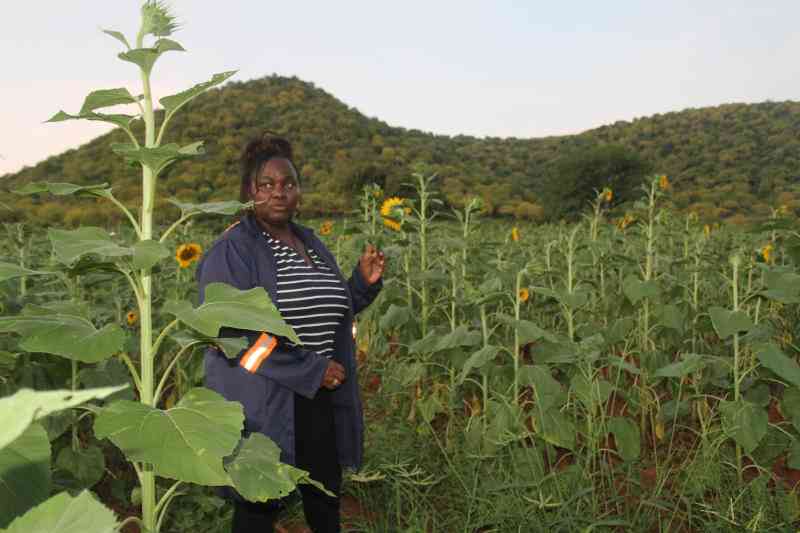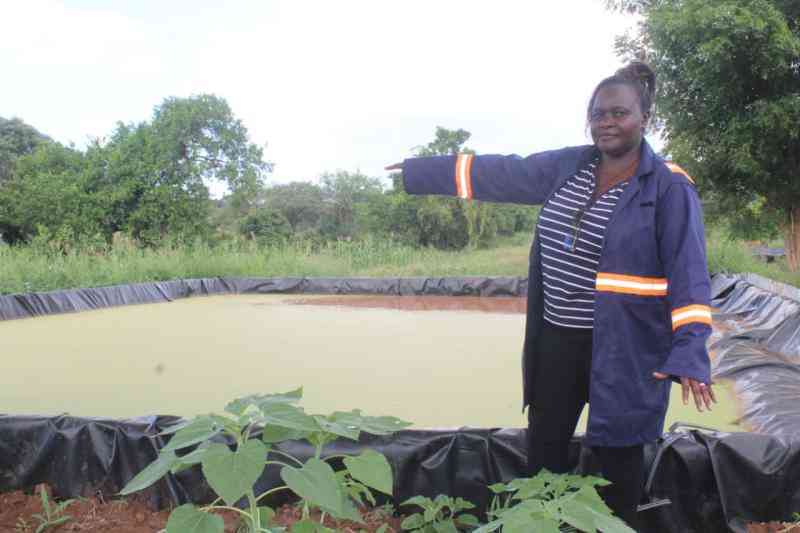This disease is also known as Cowdriosis.
Heartwater is an infectious, non-contagious disease of ruminants species. It is a Tick borne disease that occurs in areas infested by Amblyomma species of ticks. Once infected, some animals may show no symptoms and act as carriers. Indigenous cattle breeds are more resistant than Exotic breeds.
How it is spread
The Amblyomma ticks that spread Heartwater require a warm and humid climate and bushy grass country for their development. The disease thus occurs in the rainy season.
Every year this disease destroys the calf and lamb crops of nomadic stockmen after their herds and flocks are moved from arid tick-free areas where lambing and calving has taken place, to tick-infested dry-season grazing.
Indigenous animals, both wild and domestic, living in the presence of infected Ambylomma ticks, often do not show symptoms when infected. Animals that are introduced from Heartwater-free areas react severely. Calves under 4 weeks, and lambs under 2 weeks, has a high resistance derived from their mothers’ immunity.
Common Signs of Heartwater
The incubation period after exposure to infected ticks ranges from 6 to 30 days. Clinical reactions in the very young are mild and are often not observed. Reactions in older animals are more severe
There is a sudden onset of fever, which remains high until shortly before death.
- animals develop fever, excessive watering from the eyes, and convulsions.
- there is loss of appetite, and signs of central nervous system disturbance.
- Affected animals chew constantly, lick their lips, and flick their eyelids while circling with a high-stepping gait, or standing with legs straddled and head lowered.
- Nervous signs worsen, until the stricken animals subside into lying on their abdomen and then into lying on the side and then die.
Prevention and control of Heartwater
- Curb the introduction of Amblyomma infested stock or fodder into clean areas.
- Dipping or spraying with acaricides at weekly intervals to reduces the incidence of the disease.
- There is no effective and safe vaccine against Heartwater. Nevertheless, an "infection and treatment" method with infected sheep blood or a suspension of infected nymphal ticks is used. This is injected intravenously and the post-immunisation reactions are kept in check by the administration of antibiotics at the onset of fever, and every 12 hours until the fever reduces significantly.
In areas where the disease is common adult animals are usually immune and thus it is only necessary to immunise the annual calf of lamb crop. Animals derived from Heartwater free areas should be immunised.
Treatment
To be effective treatment must be carried out in the early stages of the disease.
- Your veterinarian will administer antibiotics to your animals
- In sheep, goats and susceptible cattle breeds, a higher dose of antibiotics may be required, especially if treatment begins late after fever and other clinical signs appear. In such cases the first treatment may be given intravenously.
- There may be a requirement for a second and third treatment before the fever drops, or a second injection intra muscularly with a long-acting antibiotic formulation.
- Animals showing nervous signs may require administration of diuretics and non-steroidal anti-inflammatory drugs. Your veterinarian will do the necessary.
Author: Dr. Paul R. N. Kangethe (BVM, UoN)
Email: PKangethe@standardmedia.co.ke
Want to get latest farming tips and videos?
Join Us
 The Standard Group Plc is a multi-media organization
with investments in media platforms spanning newspaper print operations,
television, radio broadcasting, digital and online services. The Standard Group
is recognized as a leading multi-media house in Kenya with a key influence in
matters of national and international interest.
The Standard Group Plc is a multi-media organization
with investments in media platforms spanning newspaper print operations,
television, radio broadcasting, digital and online services. The Standard Group
is recognized as a leading multi-media house in Kenya with a key influence in
matters of national and international interest.
 The Standard Group Plc is a multi-media organization
with investments in media platforms spanning newspaper print operations,
television, radio broadcasting, digital and online services. The Standard Group
is recognized as a leading multi-media house in Kenya with a key influence in
matters of national and international interest.
The Standard Group Plc is a multi-media organization
with investments in media platforms spanning newspaper print operations,
television, radio broadcasting, digital and online services. The Standard Group
is recognized as a leading multi-media house in Kenya with a key influence in
matters of national and international interest.






